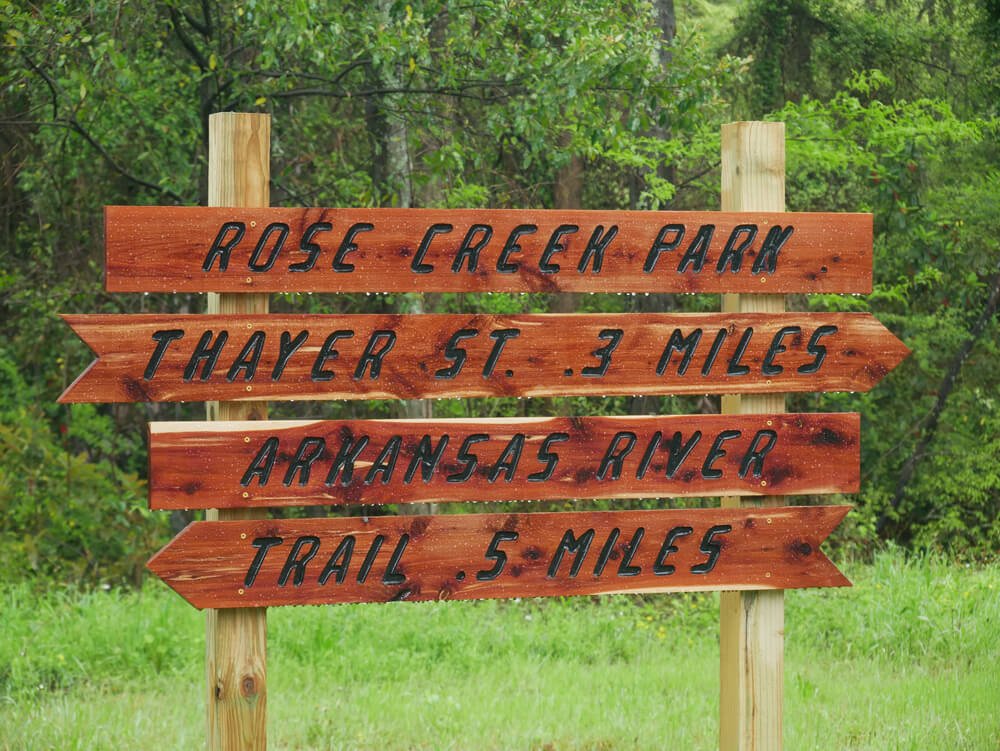Building Rose Creek Park and Trail holds promise for Capitol View neighborhood.
By Mason Ellis
“The shallow stream of Rose Creek within a comparatively small area in this section winds through exceedingly varied scenes, now over a pebbly bed surrounded by scattered cypress, now through a meadow with groups of willows, now through a little grove, and now through a rocky ravine — of small proportions but much beauty — under a bridge at a point suggestive of a beautiful permanent structure in keeping with surrounding nature, and thence on to its junction with the Arkansas River, westward of the Rocky Bluffs. Such natural features are precisely the elements to determine the site of a park, and while it has been impossible to fix any definite areas on the general plan, whatever sections may not actually be required by the railroad may with particular appropriateness form connections between the Capitol grounds and the River Bluffs.”
It’s been 110 years since city planner and landscape architect John Nolan first suggested the valley between downtown and the growing Capitol View neighborhood as a beautiful park for the city. The area has remained overlooked for most of the time since, but Rose Creek is getting some new attention thanks to the surrounding community.
Like most waterways in urban areas, Rose Creek is virtually unknown to the — residents of the city it runs through. The small stream, which starts at the University of Arkansas for Medical Sciences campus, travels under Interstate 630 and runs alongside the Union Pacific railroad line before finally emptying into the Arkansas River — has been channelized, buried and altered beyond recognition. However, this tiny stream is the backbone of a community effort to turn an overlooked and neglected part of the Capitol View neighborhood into its biggest asset.
The Rose Creek Initiative is developing the trail; Photo thanks to the Rose Creek Initiative
The Rose Creek Initiative was formed in 2004 to create a new city park along the banks of Rose Creek at some vacant lots at the east edge of the Capitol View neighborhood, a largely overgrown area that has been a regular dumping ground with only a few crumbling houses remaining. In 2019, the group expanded its goals to include building the Rose Creek Trail and the Rose Creek Watershed Alliance. And in 2022, the organization officially became a nonprofit. Today the park, the trail and the watershed are a three-part plan to not only revitalize an inner ring neighborhood, but also build connections between the neighborhood and nearby communities.
The Rose Creek Initiative has organized multiple volunteer-led efforts to clean up trash in the park and in the creek, including the installation of a homemade trash boom to prevent trash from entering the park and the Arkansas River. Other events, such as the Pop-up Park event in 2022 and the annual Christmas fireworks watch party at the State Capitol, have highlighted the park’s possibilities.
The key to success for Rose Creek is in the completion of the Rose Creek Trail. Communities up and down the Razorback Greenway in Northwest Arkansas have stood witness to the benefits of trail-oriented development. In North Little Rock, the thriving Rockwater Village along the Arkansas River Trail is proof that people want to have access to trails and want to have options for transportation. The Rose Creek Trail will have a similar effect. Stretching from the Arkansas River Trail on the north near Gill Street to the Seventh Street Viaduct on the south, this one-mile trail will have a big impact. The trail will make the Capitol View and Stifft Station neighborhoods one of the only single-family residential neighborhoods in Little Rock to have direct trail access to the Arkansas River Trail system. This will not only provide access to recreation opportunities along the city’s river parks, but also will provide a direct and safe route for biking or walking to downtown. The trail will be a link from the river trail to the Capitol Avenue bike route connecting to UAMS and will one day connect to the Southwest Trail stretching all the way to Hot Springs. And, although the trail is only a small footpath now, there are already new investments in the surrounding areas underway, from renovations of vacant lots and empty houses to large-scale mixed-use development, all either directly on the future trail route or a short distance away.
Future trail site.; Photo thanks to the Rose Creek Initiative
It’s often we see stories of large-scale, million-dollar projects by big developers or big organizations that promise to bring big changes to a city. These mega projects get most of the attention because of their sheer size and sparkle. But do not forget the small projects, the ideas talked about among neighbors or dreamed about by residents that get together and decide to make something happen. These smaller projects at the neighborhood level, led by the people that live within the communities, can make a larger and more direct impact on neighborhoods.
Mason Ellis AIA, LEED AP, is a principal at WER Architects and chair of the Rose Creek Initiative.



